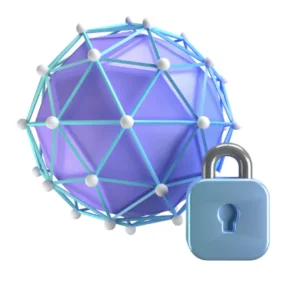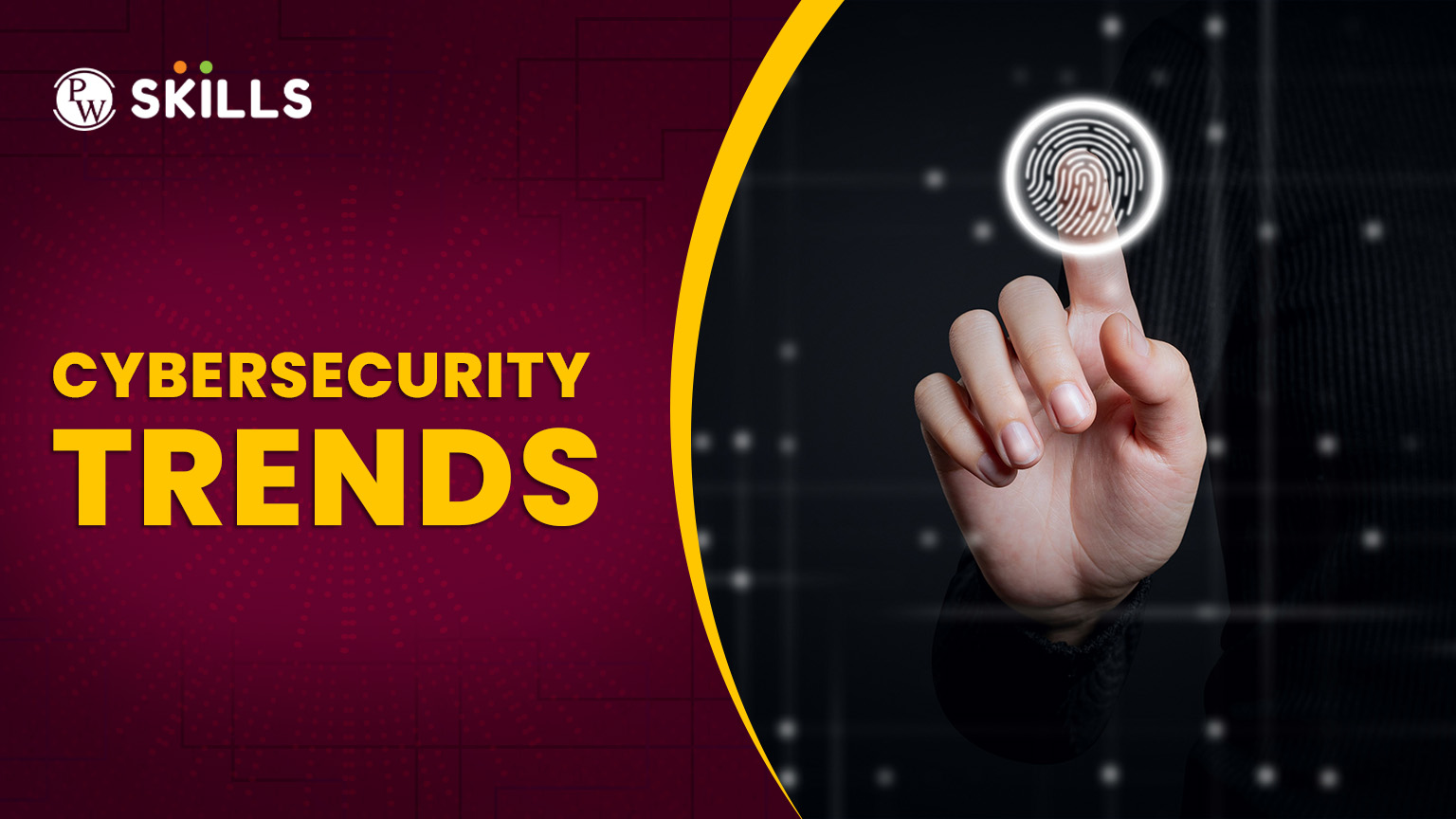Introduction
There are very many cybersecurity issues already buzzing about in 2025. With every forward-movingadvent in AI, IoT, and cloud computing, new cyber insecurities take the scene. For students preparing for careers in technology and working professionals, keeping track of what is happening is essential for the safeguarding of their data, networks, and digital identities. This blog dives deep into 20 vibrant and impactful cybersecurity trends that will influence digital safety and its horizon during 2025 and beyond.

-
AI-Powered Cybersecurity Trends: Smarter Threat Detection
AI has everything to do with most of the existing trends in cybersecurity by the year 2025. It could point to anomalies in real-time and inform systems before damage occurs. But guess what? The hackers are also using AI to develop intelligent malware. This is the battle between defensive and offensive AIs: that’s what makes AI a hot topic in the area of cybersecurity threat today.
-
Cloud Security Trends in Cybersecurity: Cloud-Guarding
The soaring adoption of the cloud is mirrored by the growth of cybersecurity threats that have to be dealt with. The threats include wrong configuration and illegal access. Threats introduced were also symptomatic of increasing gaps in cloud vulnerabilities as they got incorporated into cybersecurity trends in 2025. Expect much stronger encryption, zero-trust models, and tighter checks on compliance in the coming years.
-
Cybersecurity Trends in the Zero Trust Architecture: Never Trust, Always Verify
Among the trending buzzwords in the field of cybersecurity today is the zero trust architecture that is growing within the context of an enterprise. No trust is offered to any user or device by default-even inside the network. It really works against the always-present threats that affect networks, such as phishing, insider attacks, and lateral movement within systems.
-
Cybersecurity Trends in Quantum Computing: A Double-Edged Sword
Quantum computing indeed is powerful with a new kind of risk. It can fortify traditional encryption: on the other hand, it can break the encryption methods known today in seconds. Thus, it belongs to the hot list of cybersecurity trends to watch, especially in industries such as banking and healthcare.
-
Cybersecurity Trends in IoT Security: Securing the Smart Devices
Every smart device is a potential entry point of cyber attacks. From home cameras to industrial sensors, the Internet of Things (IoT) is booming-and so are the risks. Cybersecurity in 2025 is shaping up to see embedded security, periodical firmware upgrades, and IoT-specific firewalls.
-
Cybersecurity Trends in Ransomware Defense: The Battle Against Digital Extortion
Ransomware attacks keep increasing, and such defensive strategies will be prioritized under current cybersecurity trends. Attacks are not confined to merely locking your files; they threaten to expose sensitive information unless ransom is paid. Companies invest in offline backups, employee training, and a more ransomware-resistant infrastructure.
-
Cybersecurity Trends in Threat Intelligence Sharing: Team Up to Defense
Emerging is also the new trend in cybersecurity-collaboration. Organizations are sharing their threat data in real time. Pattern detection and prediction of imminent attacks go faster with effective response. It is like a neighborhood watch against cyber threats: only a digital one.
-
Cybersecurity Trends in Mobile Security: Safeguarding the Pocket Size Target
Phones are not only used to communicate anymore; storing information with sensitive data is integrated into their equation. App security, biometric authentication, and remote-wipe capabilities are among the technologies capturing the cybersecurity trends of 2025. With implementations like mobile banking and payments, threats will also proliferate and develop in terms of distinct characteristics found among mobile devices.
-
Cybersecurity Trends in Biometric Authentication: Beyond the Password
Passwords are now a thing of the past; your face or fingerprint is your new login. Biometric-based systems are fast becoming prevalent, making it one of the top cybersecurity trends since it is secure and convenient. However, the leakage of such biometric data can lead to damages that cannot be repaired; hence the necessity of security surrounding it.
-
Cybersecurity Trends in Work-from-Home: Normalizing Hybrid Environments
The post-pandemic world today has indoctrinated remote working into the general public’s lifestyle. However, this creates its own security challenges in the enclave of home networks and personal devices. Cybersecurity trends in 2025 will focus on VPNs, endpoint protection, and secure cloud-based tools accessed by remote teams.
Also Read: Online Cybersecurity Internship by Tata: Apply now for your Free Certificate
-
Cybersecurity Trends in Data Privacy Laws: Where Law Meets Security
Strict privacy laws such as GDPR and India’s Digital Personal Data Protection Act push companies toward compliance or incurring penalties. Legal changes in compliance are propelling cybersecurity trends relating to data minimization and consent-based sharing with transparency in storage.
-
Cybersecurity trends in cyber insurance: Funding the Disaster
Cyber insurance coverage is becoming very vital. One of the reasons for this is that organizations are increasingly opting for policies that protect them against damages from attacks. Trends in cybersecurity in 2025 evolve, indicating that better security must be met so that insurers can insure the companies.
-
Cybersecurity Trends in Social Engineering Awareness: Educating the Human Firewall
Phishing, baiting, and pretexting-social engineering fools people in 2025. What the trends in cybersecurity now recommend as the best defense is employee education. Now commonplace in corporate setups are interactive training sessions and phishing simulations.
-
Security in DevSecOps: Shift Left in Development
Security is not a thought anymore in 2025, according to signs of trends in cybersecurity; it’s built into the development process itself. DevSecOps incorporates security into every step so that the chances of vulnerabilities getting into production are lowered.
-
Cybersecurity Trends in Digital Identity Protection: You Are Your Data
From email to government IDs, digital identity is becoming a primary target. In 2025 cybersecurity trends aim to secure an identity by multifactor authentication-decentralized IDs and blockchain-based verification systems.
-
Cybersecurity Trends in API Security: The Invisible Attack Surface.
Every app communicates with each other using APIs, and hackers know this very well. One of the emerging cybersecurity threats is unsecured APIs. Thus, token-based authentication, API gateways, and continuous monitoring were added to the trends in cybersecurity.
-
Cybersecurity Trends in Ethical Hacking: The Good Guys Strike First.
White-hat hackers will help businesses test their systems before real attackers do this. Ethical hacking is booming, and it is one of the most valuable trends in cybersecurity compliance for organizations remaining ahead of hackers.
-
Cybersecurity Trends in Threat Hunting: Probing Hidden Dangers.
Threat hunters are going the extra mile by actively searching for indicators of compromise rather than waiting for alerts. This trend is forward-moving, reflecting what will happen in 2025 as companies comprehend some assault threats on their cybersecurity systems that go unnoticed through automated measures alone.
-
Cybersecurity Trends in Cybersecurity-as-a-Service: Security on Subscription.
On-demand access to security tools and experts is now available for companies just like SaaS. One of the smartest security trends for small businesses that cannot afford in-house security teams is cybersecurity as a service.
-
Cybersecurity Trends in Personal Awareness: Protecting the Digital You.
Ultimately, cybersecurity trends in 2025 focus on individuals. Students and even the seasoned professionals are expected to take over their digital hygiene. Strong passwords, updated software, and keeping your head up online are basic yet powerful actions.
To Guide Your Future in Cybersecurity Trends
Fast-moving, unpredictable, and vital to keeping us all digitally alive, cybersecurity trends in 2025 cover everything from advanced AI to tougher privacy regulations. Each trend tells a story about opportunity and caution on the other hand. The profession expands for students entering tech and for those already in the field. Awareness is the first step. Action is next.
Master Your Cyber Security Skills
Power up your future in technology with the Cyber Security Course from PW Skills. Stay updated with emerging security trends and get job-ready by 2025.
Well, you can follow the news of cybersecurity, take up updated courses like that from PW Skills, and then enjoy subscribing to ethical hacking YouTube channels or blogs. Most definitely, because as new cybersecurity threats emerge, organizations are looking to hire ethical hackers, analysts, and compliance experts across all industries. Key networking basics mixed with a scripting language such as Python and an understanding of firewalls, cloud security, and threat analysis will do well.Cybersecurity Trends FAQs
How can I keep myself updated with the latest trends in cybersecurity as a beginner?
Is there a demand for cybersecurity careers in 2025?
Which are the upcoming skills to master for future trends in cybersecurity?

